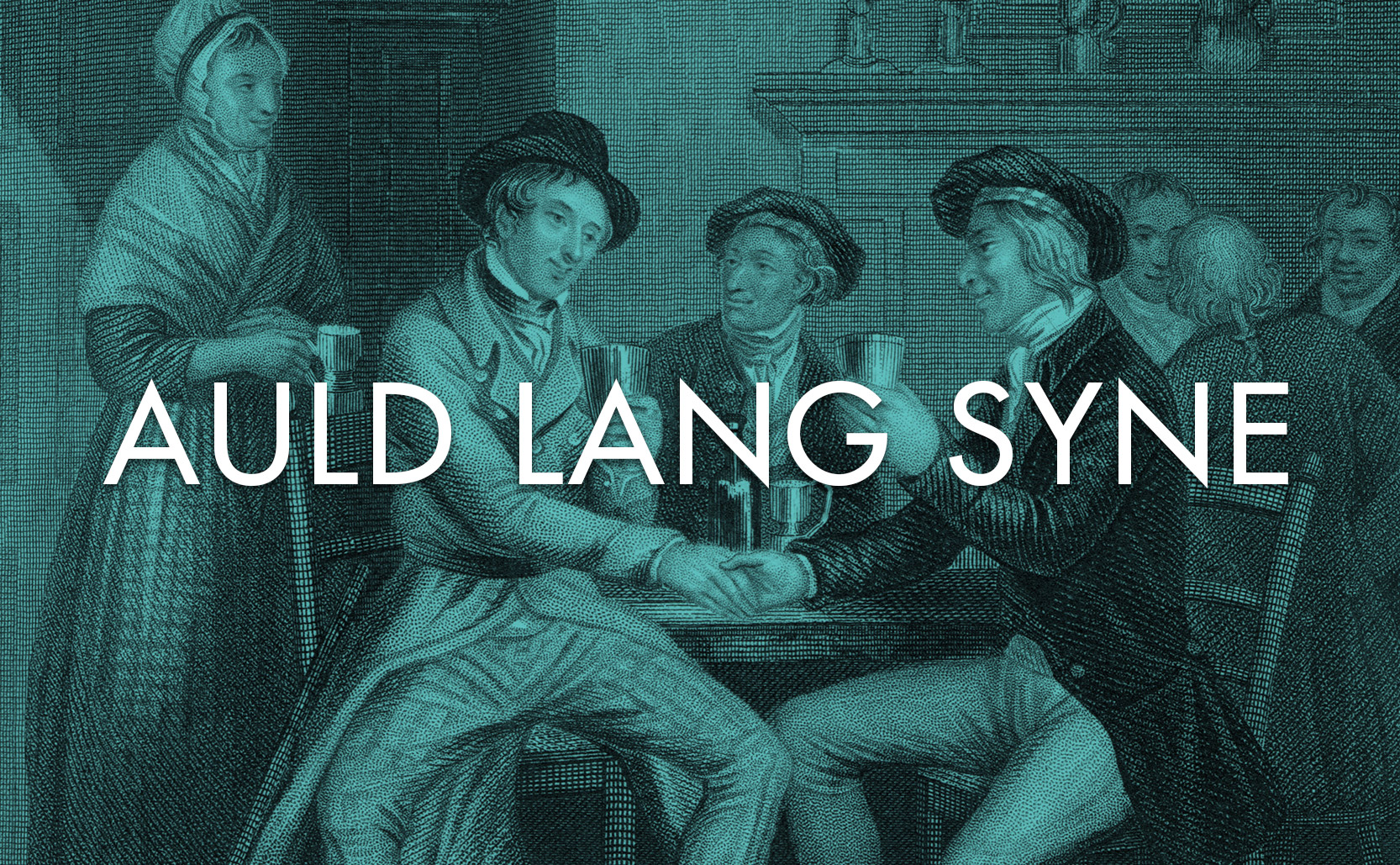Auld Lang Syne
The nostalgic song toasting times gone by that has spread around the world.
Auld Lang Syne started as a traditional Scottish folk song. The lyrics were written down, added to, and made famous by 18th century Scottish national poet Robert Burns. In the late 18th century Burns was touring Scotland collecting folk songs & poetry when he recorded Auld Lang Syne in 1788 and submitted it to The Scots Musical Museum.
Burns contributed hundreds of songs to the Museum whose intention was to preserve the fading Scots language & culture which was becoming increasingly influenced by English culture. Auld Lang Syne is written partially in English but also partially in Scots (which is a Germanic derived Scottish language, different than “Scottish” which is a Celtic Gaelic derived language). The lyrics were originally set to a few different melodies but in 1799 they were paired with the melody we know today.

What is it and why New Year’s Eve?
Because the lyrics are partially in Scots most people don’t know exactly what the song means. The title “auld lang syne” is Scots and translates to “old long since” or more loosely “for the sake of the good old days gone by”. The song is a toast to friendship and to the fond memories of days gone by.
Given the song’s spirit of looking back while looking forward it became a standard sung every Hogmanay (the Scottish New Year’s Eve). Its association with New Year’s in North America was because of Guy Lombardo. On New Year’s Eve 1928 Guy Lombardo and The Royal Canadians big band hosted a concert at the Roosevelt Hotel in New York City and at the stroke of midnight they played Auld Lang Syne. For the next 47 years they played NYE concerts and every midnight they played Auld Lang Syne, earning Lombardo the nickname of “Mr. New Year’s Eve”. When Dick Clark created Dick Clark’s New Year’s Rockin’ Eve from Times Square in 1972 he too played Lombardo’s version of Auld Lang Syne at midnight. Since then the song has become synonymous with New Year’s.
Around the World
While the song is internationally recognized as the unofficial theme song of New Year’s Eve the melody has been used in other ways. The Korean national anthem Aegukga had used the melody of Auld Lang Syne until 1948 when it was replaced with an original melody. It was also the melody of the national anthem of the Maldives, Qaumii salaam, until 1972 when it too was replaced with an original melody.
The Dutch song Wij houden van Oranje (which translates to “We Love Orange”) is a national soccer chant set to the melody of Auld Lang Syne. Also in Japan the melody is used for for the graduation ceremony song Hotaru no Hikari, it’s the melody used to mark the end of the day in department stores, etc.
Toasting the Past, Looking Forward
Like the Roman god Janus, Auld Lang Syne is a seasonal reminder to look back at the days gone by but also look ahead to the future. It’s a nostalgic song that toasts the people with us today as well as the people with us in spirit.


